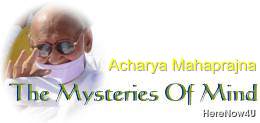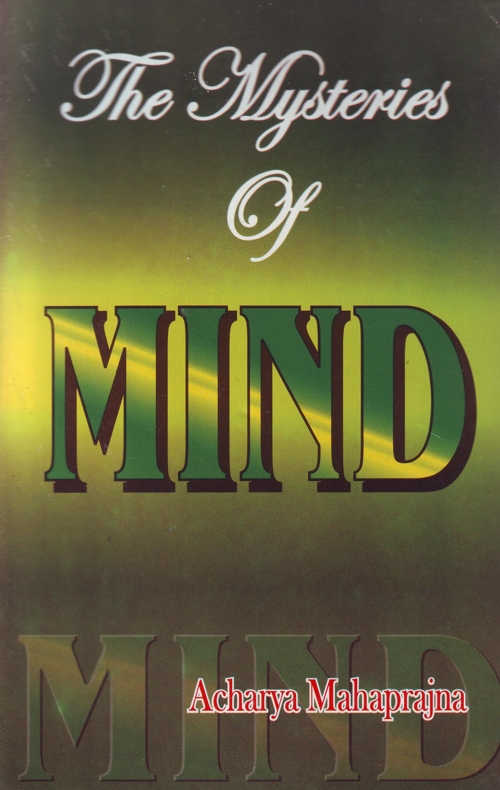
Search For Existence: Right Vision
We have begun a pilgrimage today. We have also chosen a path for it. Every one walks on some path or the other. We too have been doing so. Every path is paved with footprints, but ours is a path, which has no footprints. Footprints on a path suggest that someone has already walked on it and we are tempted to follow the footprints. The absence of footprints on our path means that we are not going to follow anybody. Ours is a path without footprints, and, therefore, there is no question of our following anybody.
Thoughts leave their traces on the mind. Actions, which we had done in the past, have also left their traces on our minds, which assume the form of habits or predilections. Words, which we speak or hear, also do the same. Thoughts, actions and words disappear but the traces they leave on our minds remain active.
There is no possibility of our following or imitating anybody because we have chosen a path, which has no footprints. Those who walk on other paths get attached to their own way of life, and, therefore, leave their traces and footprints behind them and others of the same nature imitate and follow them. Their lives are lives of indulgence. On the other hand, those who walk on this path, which we have chosen for ourselves, are aspirants who, have given up all kinds of attachments, and, therefore, have not and will not leave any traces or footprints behind for others to imitate. The pilgrim on this path will have to rely on his own resources and exertion. A path on which there are no footprints is the best path because it is free from all the traces of the past, which might divert the attention of the pilgrim.
Our only aim in walking on this path is to gain insight.
Therefore, let us see; let us look within. Let the soul see itself. This may appear to be something queer. What is the soul, which perceives itself? Who is the seer and what does he perceive? It is a perplexing question. The answer is that when the soul becomes divided, one part of it becomes the seer and the other part the object of perception.
See your breath. See your mind. See your body. See the life force in you. See your aura. I am sure you would like to know if your breath is your soul. Perhaps you would also like to know if your body is your soul. You may very well ask if your mind or the aura which surrounds your body and which is generated by your body or the vital force, in you is your soul.
If you thought over these questions a bit seriously, you will come to the conclusion that your breath, your body, your mind, the aura emanating from your body and the vital force in it are your soul. If the vital force in the body were not the soul, we will not be able to distinguish between a living and a dead body. If the living body were not the soul, we shall not be able to distinguish it from the dead body. If the mind were not the soul, there will be no difference between thinking and non-thinking beings. Every one, of these is, therefore, the soul.
We cannot understand the body correctly if we did not feel and understand breath. We cannot understand the mind without understanding the body. We cannot perceive the aura around the body without understanding the body. We cannot understand the vital force until we have seen and known the aura. We cannot come across the conscious substance, which is the end of our journey until we have known and understood the vital force. This is the span of our journey. We will have to traverse the entire course in the very order given above in order to arrive at the stage of self-realization, at that which is the subtlest, i.e., at our existence.
Breath is the first window through which you can perceive the soul. It is by passing through this window that the journey towards the self begins. It is a journey within. It is a journey towards self-perception. Normally we are accustomed to looking outwards only. It is the nature of the mind to run towards the external world only. Breath is the first door you have to enter into before the journey begins. When the mind begins to follow the ingoing breath, we begin to enter into our being. Breath is the soul. The body is the soul. The mind is the soul. We can reach the end of our journey through them only.
It is a delusion to desire to see the soul directly. The soul, which is the supreme reality, the supreme existence and the subtlest entity, cannot be an object of perception by the gross sense-organs. To say so will be a great mistake.
To say that we should try to see the soul through the soul means,
- firstly, that we should first engage the mind in perceiving the vibrations of breath.
- Secondly, it means engaging the mind in perceiving the vibrations of the body and sensations.
- Thirdly, it means watching one's own thought-processes.
Once you have gone through these three stages, you will encounter the aura around the body and get a chance to perceive it.
The somatic and extra-somatic atmospheres in the midst of which we live are full of vibrations. Those who have happened to see the aura feel that in doing so they were floating in an ocean of vibrations whose expanse they are unable to imagine. Having seen the aura we will be able to come in to contact with the vital force. It is the vital energy, which is the source of all the internal and external vibrations.
Breath is not the soul. The body is not the soul. The mind and the aura are not the soul. It is the vital energy, which soaks breath, mind and body in the soul so much so that they become the soul. The body which comes in to contact with the life force and becomes permeated with it becomes alive and a part and parcel of the soul. When the vital force comes to establish a relationship with the mind, the mind becomes activated. The vital force when it comes to be associated with breath activates the latter. Breath begins to vibrate because of this association. It is the vital energy, which makes the heartthrob, the breath vibrates, the mental processes begin and the spectrum of the aura radiate. The ever-flowing stream of consciousness is the source of the vital energy. Vital energy inducts life in the entire structure of the body and transforms everything, which is non-soul into consciousness.
- To understand breath is the first stage in the process of sadhana, which culminates in the perception of the soul.
- To understand the body is the second stage.
- To understand the thought-processes is the third stage.
- To understand the aura is the fourth stage.
- To understand the vital force is the fifth stage.
- Self-realization is the end of these stages.
 Acharya Mahaprajna
Acharya Mahaprajna

